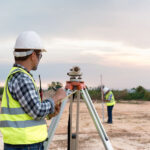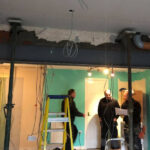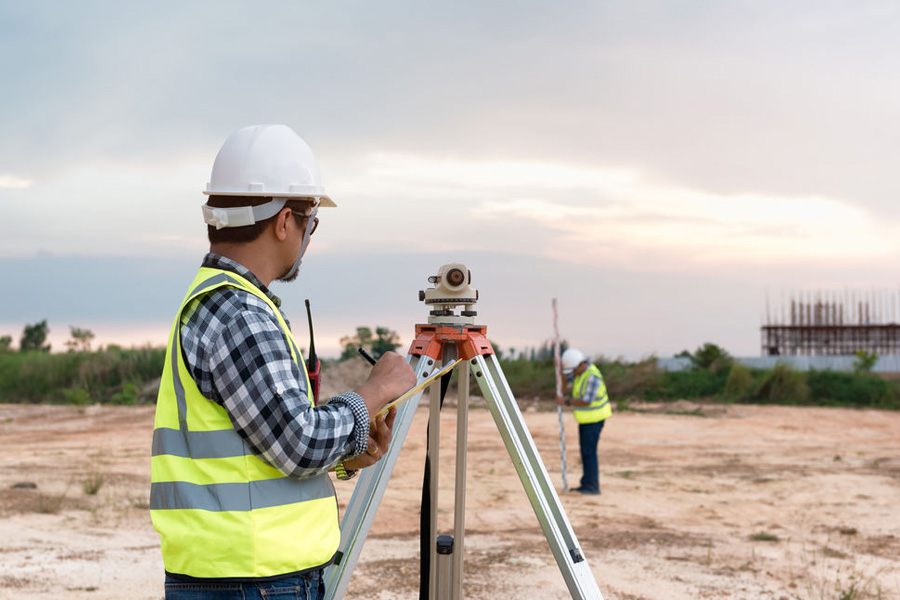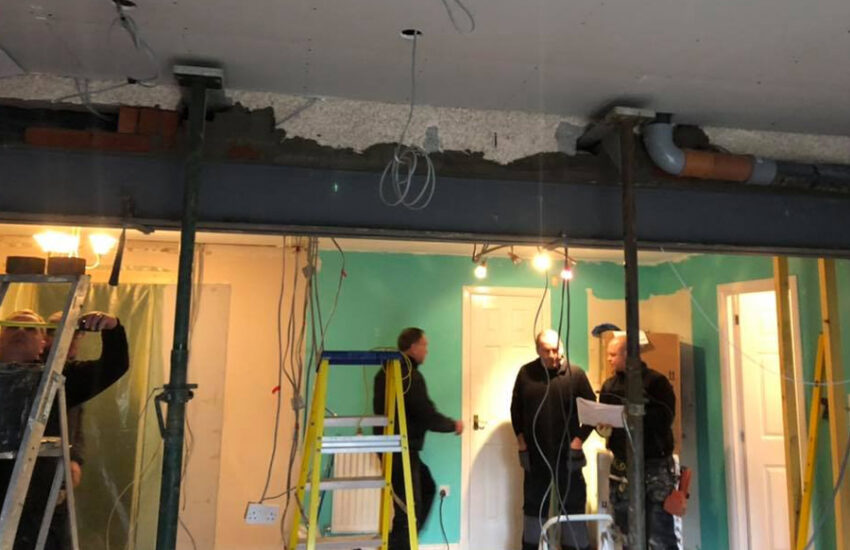The precise measurement and mapping of our surroundings form the bedrock of the modern built environment. In the United Kingdom, professional surveying services provide the essential data that guides construction, defines ownership, and shapes our infrastructure.
This discipline is both a technical science and a professional art. It involves determining the exact positions of points on the earth’s surface. The careful measurement of distances and angles between these points is fundamental.
Qualified surveyors possess specialised academic and technical expertise. Their work ensures exceptional accuracy in representing land, three-dimensional objects, and trajectories. This reliable data is crucial for countless projects.
From historic boundaries to new property developments, these detailed surveys have supported UK progress for centuries. They are vital for transportation, communications, and building construction nationwide.
This guide explores the critical role of these services. We will examine the profession’s evolution, modern techniques, and its diverse applications across various sectors in the UK today.
Key Takeaways
- Surveying is a foundational profession that combines scientific precision with practical application.
- Accurate measurements of land and property are essential for construction and development projects.
- Professional surveyors in the UK hold specific qualifications ensuring high standards of work.
- The data from surveys supports legal, commercial, and infrastructure decisions across the nation.
- This field has a long history of contributing to the UK’s built environment and continues to evolve.
UK Surveying Services Overview
This profession has two core functions. It determines the exact position of existing features for mapping. It also establishes new marks to guide construction or define land boundaries.
This work is critical for planning many projects. These include construction, transport systems, and communications. It also provides the legal framework for property ownership.
Defining Land and Property Surveys
Land surveying involves the precise measurement and mapping of terrain. These surveys create a reliable record of a site’s current state. They are the first step in any development.
Property surveys serve a dual purpose in the UK. They assess conditions for valuations and sales. They also set out reference points for new builds and extensions.
The Role of Surveyors in Civil Engineering
Surveyors are vital partners in civil engineering. They supply the accurate measurements needed to design infrastructure. This includes roads, bridges, and buildings.
Their involvement spans the entire project lifecycle. They analyse site conditions from the start. They also verify that the final construction matches the plans perfectly.
This close collaboration minimises errors and controls costs. It ensures projects meet all UK regulatory standards. The integration of precise data is fundamental to successful civil engineering.
Historical Evolution of Surveying in the UK
Long before modern instruments, ancient civilisations demonstrated remarkable skill in defining their world. The near-perfect alignment of the Great Pyramid of Giza, built around 2700 BCE, stands as a testament to early mastery of measurement for construction.
This article traces the profession’s journey from these ancient foundations to the sophisticated practices seen in the United Kingdom today.
From Ancient Techniques to Modern Innovations
In England, a pivotal moment arrived with the Domesday Book of 1086. Commissioned by William the Conqueror, it systematically recorded land ownership and established foundational boundaries.
Instrumentation advanced significantly over time. Edmund Gunter’s chain, introduced in 1620, revolutionised distance measurement. Later, Jesse Ramsden’s precision theodolite in 1787 allowed for accurate angle measurement.
The late 18th century marked the dawn of modern surveying. Projects like the measurement of meridian arcs established scientific principles that underpinned rigorous mapping.
Key Milestones in UK Surveying History
| Period | Innovation | Impact |
|---|---|---|
| 1086 | Domesday Book | Systematic record of land ownership and quality across England. |
| 1620 | Gunter’s Chain | Standardised unit for accurate measurement of land plots. |
| 1787 | Ramsden’s Theodolite | Enabled precise measurement of horizontal and vertical angles. |
| Late 18th Century | Meridian Arc Measurements | Laid the scientific foundation for modern geodetic surveying. |
Surveying: Techniques and Innovations
Over centuries, a series of key inventions fundamentally reshaped how professionals measure the world. This evolution in technique is a story of increasing accuracy, speed, and capability.
The profession’s progress hinges on the development of its tools. Advancements in surveying instruments have consistently pushed the boundaries of what is possible.
Advancements in Instrumentation
Early modern progress was marked by integrating multiple innovations into single devices. By the 1720s, theodolites combined features like the vernier, telescopic sights, and spirit levels.
This created more sophisticated instrument measuring tools. A major breakthrough came around 1775 with the circle-dividing engine.
It allowed for the precise division of circles on portable instruments. This granted a new level of accuracy previously unavailable for work in the field.
Integration of Technology in Field Surveys
The 20th century accelerated change with new forms of technology. Photogrammetry, introduced around 1920, enabled mapping from aerial photographs.
This transformed how large areas were surveyed. The late 20th century brought even more powerful tools.
Electronic computers revolutionised the processing of survey data. They allowed for real-time analysis and faster delivery of results.
Satellite positioning systems provided a global framework for measurements. This technology offered incredible accuracy over vast distances.
Historical Innovations in Surveying Instrumentation
| Innovation | Approximate Date | Primary Impact |
|---|---|---|
| Vernier Scale | 1631 | Enabled more precise readings on measurement scales. |
| Telescopic Sights | 1669 | Improved accuracy for sighting distant points. |
| Circle-Dividing Engine | ~1775 | Allowed highly accurate angle measurement with portable surveying instruments. |
| Photogrammetry | ~1920 | Introduced efficient large-area mapping from aerial photos. |
Impact of Surveying on Land Development
Accurate spatial data provides the critical starting point for all land development projects. This information transforms raw land into a viable canvas for architects and engineers.
Before any construction begins, detailed surveying establishes the existing conditions. It maps topography, boundaries, and potential constraints. This data directly shapes design decisions and project feasibility.
The planning process relies heavily on this precise information. It ensures developments comply with regulations and respect neighbouring properties. Accurate surveys demonstrate site suitability for intended use.
Historically, systematic land development depended on organised surveying. Cadastral systems enabled the division of territories and recording of ownership. This was vital for governance and taxation.
Today, this work helps maximise the value of developable areas. It optimises site layouts and provides certified measurements for legal transactions. The impact extends to regional planning and environmental protection.
How Surveying Influences Key Development Stages
| Development Stage | Surveying Input | Direct Impact |
|---|---|---|
| Site Feasibility | Topographical and boundary surveys | Determines project viability and initial design constraints. |
| Detailed Planning | Precise measurements of existing features | Ensures regulatory compliance and informs final designs. |
| Construction | Setting out and monitoring | Guides builders to accurately realise the planned development. |
| Legal Completion | As-built surveys and boundary certification | Provides definitive records for property sales and ownership. |
Modern Surveying Instruments and Tools
Contemporary measurement work relies on a sophisticated suite of instruments. These tools have dramatically increased the speed, accuracy, and scope of data collection in the field.
Professionals now use advanced equipment to capture complex spatial information with remarkable efficiency.
Total Stations and Theodolites
The theodolite is a foundational instrument for measuring angles. It uses separate circles to determine positions in both horizontal vertical planes.
This technology evolved into the total station. It integrates a theodolite with an electronic distance measurement (EDM) device.
This combination allows a single instrument to measure angles and distances simultaneously. The first integrated units appeared in the 1970s, revolutionising the profession.
Modern robotic total stations can operate with a single crew member. They connect to satellite positioning for enhanced accuracy and can transmit data wirelessly.
Electronic Distance Measurement and 3D Scanners
The development of electronic distance technology was a major leap forward. Introduced in the late 1950s, EDM uses light waves to calculate distance.
It eliminated the need for physical chains or tapes. This technology is a core component of today’s total stations.
For comprehensive site capture, professionals use 3D scanners. These tools rapidly capture millions of data points to create detailed ‘point clouds’.
They are ideal for documenting complex structures and existing conditions. This supports projects like building information modelling.
Comparison of Key Modern Surveying Tools
| Instrument | Primary Function | Key Advantage |
|---|---|---|
| Theodolite | Angle measurement | Fundamental for establishing precise directional control. |
| Total Station | Integrated angle and distance measurement | High-speed, all-in-one data collection for most surveying instruments tasks. |
| 3D Scanner | Mass data point capture | Unprecedented detail for complex structures and as-built records. |
| GNSS Receiver | Satellite positioning | Provides accurate global coordinates for large-scale projects. |
Data Accuracy and Control in Surveys
The reliability of survey results hinges entirely on rigorous control procedures implemented throughout the measurement process. Professionals establish comprehensive frameworks to maintain data integrity from initial collection through final delivery.
Methods for Ensuring Precision in Measurements
Surveyors create primary control networks as the foundation for accurate work. These networks consist of precisely measured points from which subsidiary positions are determined. This hierarchical approach ensures consistent accuracy across large areas.
Systematic procedures form the backbone of quality control. Instruments undergo regular calibration before field use. Critical points receive multiple measurements to verify results. Closed traverse techniques that return to starting positions help quantify accumulated errors.
Modern technology has revolutionised precision standards. Real Time Kinematic GPS systems achieve remarkable accuracy of 1cm horizontally and 2cm vertically. Continuous quality indicators allow real-time assessment of data reliability during collection.
Quality control extends to comprehensive data processing. Sophisticated software applies rigorous adjustments across networks. This identifies errors requiring field verification. The final data includes detailed accuracy reports documenting achieved precision levels.
Sustainable Practices and the Environment
Modern professional practice increasingly prioritises the balance between development and ecological preservation. This focus ensures that progress does not come at the expense of the natural world.
Specialist professionals play a vital role in this endeavour. They manage the complex relationship between the natural and built environment.
Environmental Contributions of Modern Surveying
These experts assess the impact of construction work on the local environment. A typical day involves collecting field samples and performing detailed site assessments.
They also conduct laboratory analysis to create practical solutions for clients. Their work helps minimise ecological harm during development projects.
Accurate data provided by this work is crucial for sustainable planning. It allows developers to avoid sensitive habitats and preserve valuable natural features.
This contributes significantly to protecting the environment. It supports the creation of a more sustainable built environment for future generations.
Innovative Practices with My-Surv
Innovation is the driving force behind modern land and property measurement. Leading professionals combine traditional expertise with cutting-edge tools to deliver superior results for a wide range of projects.
This approach seamlessly integrates multiple technologies. Unmanned aerial vehicles (UAVs), terrestrial laser scanning, and real-time positioning systems work together. They provide comprehensive spatial data solutions with remarkable speed and accuracy.
The use of advanced methods allows surveyors to tackle complex challenges. They can safely assess hazardous environments and document fragile heritage structures without contact. Rapidly changing construction sites are also monitored with high precision.
Innovation extends beyond hardware to project management and client communication. Cloud-based data sharing and Building Information Modelling (BIM) integration enable seamless collaboration. This ensures services align perfectly with client needs throughout a project’s lifecycle.
My-Surv exemplifies this commitment to excellence. Its professionals maintain continuous development, staying current with emerging technology and regulations. This forward-thinking approach provides clients with robust, future-proof solutions.
Comparing Innovative Surveying Technologies
| Technology | Primary Application | Key Benefit |
|---|---|---|
| UAVs (Drones) | Large-area topographic mapping | Rapid data collection over difficult terrain. |
| 3D Laser Scanning | Detailed as-built records of structures | Captures millions of data points for highly accurate models. |
| BIM Integration | Collaborative design and construction | Creates a shared digital model for all project stakeholders. |
Expert Advice from Industry Professionals
Drawing on years of practical experience, seasoned surveyors offer invaluable guidance to clients and aspiring professionals alike. Their insights bridge the gap between technical data and practical decision-making.
Successful practice requires a dual focus. Professional surveyors combine deep technical knowledge with excellent interpersonal skills. They regularly interact with clients, contractors, and planners who depend on their expert analysis.
Specialists in different fields provide advice tailored to specific needs. Residential professionals help homebuyers choose the right survey level based on a property’s age and condition. They then clarify findings and assist with purchase negotiations.
Commercial property surveyors emphasise thorough due diligence. Their advice covers physical state, lease terms, and regulatory compliance. This holistic view protects investment value.
Building surveyors provide advice across a project’s entire lifecycle. Their expertise in construction technology and regulations supports projects from initial feasibility to final completion.
Clear communication is paramount. Experts recommend presenting complex findings in accessible language. This ensures clients fully understand the implications without losing technical precision.
For those entering the field, experienced practitioners advise gaining broad experience early. This builds a versatile skill set and informs future specialisation. Continuous learning and ethical practice are cornerstones of a successful career.
Core Advisory Roles of Specialist Surveyors
| Surveyor Specialism | Primary Client Focus | Key Advisory Function |
|---|---|---|
| Residential Surveyor | Homebuyers and Vendors | Property condition assessment and transaction guidance. |
| Commercial Property Surveyor | Investors and Businesses | Investment due diligence and market positioning analysis. |
| Building Surveyor | Property Developers and Owners | Project lifecycle management from feasibility to completion. |
My Surv: Trusted UK Survey Solutions
Clients seeking dependable data for land and property decisions turn to trusted UK survey solutions. These professional services deliver reliable, accurate, and comprehensive spatial information. This forms the basis for critical choices in residential, commercial, and infrastructure projects.
My Surv provides solutions across the full spectrum of surveying disciplines. They combine experienced professionals with advanced technology and rigorous quality standards. This ensures surveys meet the exacting requirements of diverse clients.
Trusted survey solutions depend on several key pillars. Professional expertise is paramount, supported by appropriate insurance coverage. Adherence to recognised standards and transparent communication are also essential. This keeps clients informed from initial instruction through to final report delivery.
Accurate land surveys establish boundaries and identify potential issues like encroachments. They provide certified measurements that support property transactions and development planning with confidence. For property surveys, services are tailored to client needs.
These range from basic condition assessments to comprehensive building surveys. The latter investigate construction, identify defects, and offer detailed maintenance advice. This provides a thorough understanding of a property’s condition before purchase.
The commitment to quality is demonstrated by positive client feedback on independent review platforms. Professional indemnity insurance and robust quality management systems further minimise risk. This assures clients of consistent, high-standard work.
Technology Integration in Surveying Projects
Modern measurement methodologies combine satellite systems, aerial platforms, and terrestrial scanners to create detailed spatial representations. This integrated approach allows professionals to select the optimal tools for each project’s specific requirements.
Satellite Positioning and Global Navigation
The United States Air Force launched the first Global Positioning System prototype satellites in 1978. This marked a significant advancement over earlier systems like the Navy’s TRANSIT programme.
Modern global positioning technology enables centimetre-level accuracy through Real Time Kinematic techniques. Surveyors can establish coordinates anywhere without line-of-sight to existing control points.
Utilising UAVs and 3D Scanning Technologies
Unmanned aerial vehicles (UAVs) enable rapid data capture across large or inaccessible areas. Photogrammetric processing transforms aerial photographs into accurate 3D models and elevation data.
Three-dimensional scanning technologies capture millions of data points within minutes. This creates comprehensive point clouds for renovation projects and heritage recording.
Comparative Analysis of Modern Surveying Technologies
| Technology | Primary Application | Accuracy Level |
|---|---|---|
| Satellite Positioning | Large-scale geometric control | Centimetre precision |
| UAV Photogrammetry | Topographic mapping | 2-5 centimetres |
| 3D Laser Scanning | Structural documentation | Millimetre accuracy |
| Integrated Systems | Comprehensive project solutions | Variable by component |
Career Pathways in the Surveying Sector
A career in the built environment offers a dynamic and rewarding pathway with numerous specialisations. The profession relies on skilled surveyors to manage, value, and develop land and property. This field provides essential services that shape our towns, cities, and countryside.
Diverse Roles in the Built Environment
The sector encompasses a wide array of specialisms. Professionals can focus on specific areas that match their skills and interests.
There are many different types of roles available. These include:
- Building surveyors, who assess the condition and safety of structures.
- Quantity surveyors, who manage project costs and contracts.
- Planning and development, rural practice, and environmental specialists.
This variety ensures a role for almost every aptitude within the built environment.
Becoming a Chartered Professional
The pinnacle of the profession is achieving chartered status. Chartered surveyors are recognised for their high level of competence and ethical standards.
This status is awarded by the Royal Institution of Chartered Surveyors (RICS). This institution chartered body sets rigorous entry requirements.
Aspiring chartered surveyors typically begin with an RICS-accredited degree. These programmes combine academic theory with practical skills, often taught by lecturers with industry experience.
Conclusion
Throughout human history, the need to define our environment has driven technological innovation. From ancient rope stretchers to modern satellite systems, the profession of surveying has continuously evolved. This article has demonstrated its essential role in the UK’s built environment.
Professional surveyors combine multiple disciplines to solve complex spatial problems. Their work supports construction projects from initial planning through to final verification. Accurate land measurement establishes boundaries and enables sustainable development.
My-Surv exemplifies this professional commitment to quality. Providers like My Surv maintain the integrity that has characterised the field since ancient times. They ensure accurate data for residential, commercial, and infrastructure projects across the United Kingdom.
Looking to the end of this guide, readers should appreciate that surveying represents far more than technical measurement. It is a vital service that supports property transactions, defines ownership, and shapes our physical world for generations to come.
FAQ
What is the primary purpose of a land survey?
A land survey establishes precise boundaries and features of a property. It provides crucial data for construction, resolving disputes, and planning development. This work ensures accuracy in property lines and land levels.
How has technology changed the field of surveying?
Technology has revolutionised the profession. Modern tools like Global Positioning Systems (GPS), electronic distance measurement devices, and 3D scanners allow for greater speed and data accuracy. These innovations have largely replaced older methods like the plane table.
Why is data accuracy so critical in civil engineering projects?
Accurate measurements are the foundation of any successful project. Errors in setting out boundaries or levels can lead to costly construction mistakes, legal issues, or safety hazards. Surveyors use rigorous control methods to ensure precision in their work.
What role do surveyors play in environmental protection?
Professionals in this field contribute significantly to the environment. They map sensitive areas, monitor land changes, and provide advice for sustainable development. Their work helps minimise the impact of construction on the natural world.
What are the different types of surveys available for a property?
There are several types, each serving a distinct purpose. Common surveys include boundary surveys, topographic surveys, and building surveys. A chartered surveyor can recommend the right type based on the client’s specific needs for their property or development project.
How does a company like My-Surv integrate innovation into its services?
My-Surv utilises cutting-edge technology such as UAVs (drones) and advanced 3D scanning. This integration allows for efficient data collection and detailed analysis, providing clients with comprehensive solutions for land and building assessments.


 Expert Property Development Services in the UK
Expert Property Development Services in the UK  UK Surveying Services: Accurate Land and Property Surveys
UK Surveying Services: Accurate Land and Property Surveys  Refurbishment Projects: Planning, Design, and Execution
Refurbishment Projects: Planning, Design, and Execution  Promenade Peak: Your Private Wellness Escape
Promenade Peak: Your Private Wellness Escape  8 Quick Tips for Transforming Your Home Interior Design in Singapore
8 Quick Tips for Transforming Your Home Interior Design in Singapore  Why Material and Quality Matter in Dining Chair Rentals
Why Material and Quality Matter in Dining Chair Rentals  The Role of a Design Consultant in Collaborative Projects
The Role of a Design Consultant in Collaborative Projects  Debunking the Biggest Myths About BTO Interior Design
Debunking the Biggest Myths About BTO Interior Design  Is the Grout in Your Home Toxic? What You Should Know
Is the Grout in Your Home Toxic? What You Should Know 

